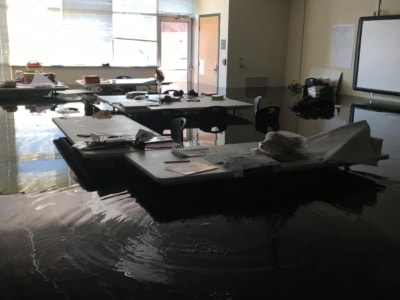When talking about education in North Carolina, one of the issues you will hear debated again and again is the amount of money we spend on public education in our state.
There is a pretty clear divide between Republicans and Democrats. Democrats often argue that the Republican-led General Assembly and the governor aren’t spending enough on schools and that they have let the state fall behind since they took power in 2010. Meanwhile, Republicans consistently tout budgets that they say are increasing the pot of funds available to schools.
Before we get started looking at North Carolina education budgets, we need to throw out a caveat: it is very difficult to make overall comparisons between current budgets and past budgets.
In 2015, North Carolina stared using a base budget instead of a continuation budget for the first time. Historically, the continuation budget included appropriation increases for the public school funding formulas (teachers, instructional supplies, textbooks, instructional support personnel, teacher assistants, etc.) due to projected increases in average daily membership (ADM).
Comparisons to prior revised appropriations may be unintentionally misleading because those amounts did not reflect distributions for salary, retirement, and medical insurance reserves. In 2015, those allocations were fully allocated in the various sections of the budget as opposed to being provided in a lump sum for later distribution by the Office of State Budget and Management as part of their budget certification process.
For 2016-17, the General Assembly passed a revised education appropriation of more than $8.7 billion, up from roughly $8.5 billion in 2015-16. The 2016-17 number get’s closer to $8.8 billion when taking into account a few public education initiatives that are funded from the UNC-System budget.
These seem like high numbers. But, another benchmark used to judge how today’s lawmakers are spending money on education are budgets pre-recession.
Nationally the great recession hit in December 2007, and the state weathered cuts for many years after that. So, some people think that a good measure of North Carolina’s success is whether we have returned to pre-recession spending on education.
In total dollars, North Carolina is actually spending more on K-12 education than it was prior to the recession.
In July 2008, the General Assembly passed a budget that spent about $7.8 billion on public education. On the face of it, the most recent budgets exceed that amount. But if you take inflation into account, you get a different picture.
In 2016 dollars, that $7.8 billion is actually worth about $8.7 billion, which means that the 2016-17 budget is comparable with where state spending on education was back in 2008.
Another comparison of spending takes both inflation and increased student population into account.
According to the Center on Budget and Policy Priorities, North Carolina spending per student, adjusted for inflation, on K-12 education has dropped 9.9 percent since 2008.
Opponents of recently passed budgets also point to cuts to particular line items, for instance school supplies.
According to data from DPI, the state’s per-pupil funding for school supplies was about $61.16 per student in 2010-11. For 2016-17, the state funding for supplies is $30.05 per student, which is actually slightly higher than in the two preceding years.
Those are some basic numbers, and that’s without even delving into more controversial spending topics like teacher pay, teacher assistants, the amount of money that goes to charter schools versus traditional public schools, and more.
But it’s a good jumping off point to discuss various candidate views of education spending.
In the upcoming election, we are focused on three races that we think are going to be the most important to education in North Carolina. Those are the gubernatorial race, the race for Lieutenant Governor, and the State Superintendent race.
Below we lay out the views of various candidates on the issue of education spending.
Gubernatorial
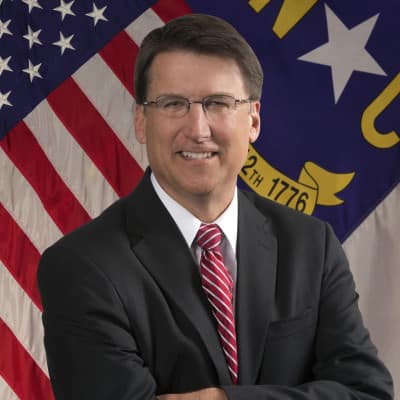
Neither candidate for Governor accepted our request to do a podcast interview. But, a recent News & Observer interview of the candidates for Governor pretty well lays out where the Republican and Democratic candidates stand on school funding.
Governor Pat McCrory, the Republican candidate running for reelection, touted his record on the subject.
“Since becoming governor, we have increased public education funding each year in office and increased the share of the state’s budget going to education. We have also increased per pupil funding. But we are only able to invest more in education because we have managed our budget responsibly and delivered nearly $1 billion in budget surpluses. After my opponent and his allies allowed education funding to be slashed by $1 billion and pushed teacher salaries to the bottom in the nation, we should continue to find ways to make additional investments in education.”
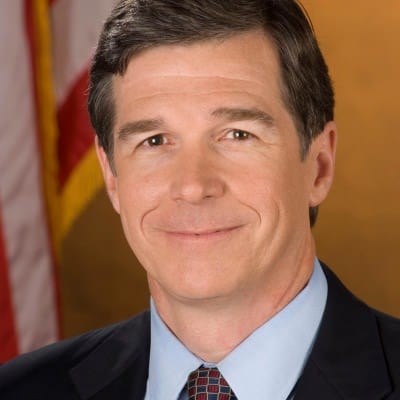
Attorney General Roy Cooper, the Democratic candidate for Governor, told the News & Observer that North Carolina isn’t spending enough on education.
“We can and must invest more money in education. It’s simply a matter of priorities. Right now we are 41st in the nation in teacher pay. When I was Senate majority leader we took North Carolina from 42nd to 21st in teacher pay, and we can do it again.
“I will make public education a priority. I have released a comprehensive education plan that starts with respecting our teachers by giving them the pay they deserve. The plan is at roycooper.com.”
Lieutenant Governor
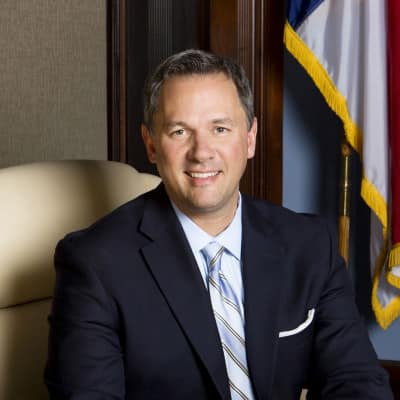
Lieutenant Governor Dan Forest, the Republican candidate for the position, said in our podcast interview with him that there is never enough funding for K-12 education.
“It’s just one of those questions that no one can ever put a number to anything. If you ask how much teachers should make, no one can tell you how much they should make. All they can tell you is that they’re not making enough. So there’s never enough. It really doesn’t matter what you’re doing.”
He went on to say that 58 percent of the state’s budget goes to education and that North Carolina is 7th in the nation in terms of the percentage of state funding that goes to education.
“If you look at it in just raw percentages, yeah we’re probably doing pretty good. If you look at it in raw numbers, again there will never be enough money. But I think we have to determine where the money is being spent and how it’s being spent. Right now, we have very little capacity to look across the entire education system in North Carolina and drill down line item by line item.”
He said it’s difficult to look into every school system and actually see where money is being spent. He said he tried to undertake a sort-of informal audit of the state’s schools himself when he started in his position.
“I couldn’t find anything. I found big round numbers of $10 million here, and $30 million there, and I don’t think that benefits our students. I’m not saying anyone is spending it the wrong way, I’m just saying we don’t know how we’re spending it. So I think we need to have a good solid audit but have a system in place that is a line-item system so we can really drill in and see where the money is being spent — make sure it’s being spent in the classroom and not for the bureaucracy.”
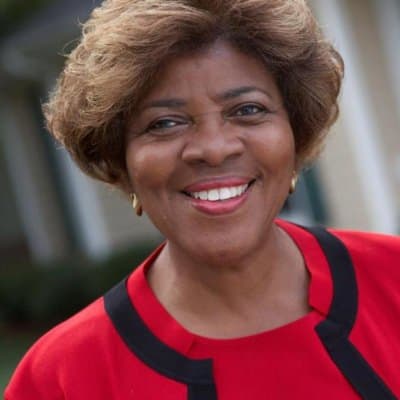
Linda Coleman, the Democratic candidate for Lieutenant Governor, said in our podcast with her that the state isn’t spending enough on education, and the money it is spending is going to the wrong things.
“We need to give the principals, superintendents, and teachers more say so in what we’re doing in terms of education and not having lawmakers decide all of that without the input. That’s why we have the Superintendent of Public Instructions there. They are closest to the superintendents. I’m not saying lawmakers need to go around to every county and get the input from every county. That’s what our Superintendent and her staff would be doing.”
Coleman said that some counties need more money from the state than others, and that there are different programs that are more successful than others. She said the state needs to figure out where funding needs to go to make sure it’s adequately educating all the state’s children. She also said digital connectivity should be a priority for the state.
“…advocating for broadband in those parts of the state where it is not there because as long as we don’t have that, then we are leaving behind a segment of our population. And we absolutely cannot afford that. We need to make sure that we are doing everything we can to provide all of the resources to all segments of the population to ensure the best education that we can provide to the children in North Carolina.”
Superintendent of Public Instruction

In our podcast with her, Superintendent of Public Instruction June Atkinson—the Democratic candidate for the position—said that more funding is needed in a number of areas, including instructional support.
“Well, people accuse those of us who are in education as never being satisfied with having sufficient resources. I think it’s incumbent upon educators to spend every single dollar wisely. But having said that when you look at what we were spending in 2002 and the number of instructional support people we had compared to last year, we have lost numbers of adults in the school to help students. So we do need to move forward in having more instructional support, more social workers, psychologists, school counselors in our schools to help the teacher address all the needs of our students.”
She also said that the state needs to provide more funding for textbooks, digital resources, and other instructional materials.
“We’ve seen an uptick in the money that we are getting for resources, but it’s still not at the level we were in eight or so years ago. So we don’t want our teachers to have to work with sticks and stones. We want them to have technology. We want them to have resources that allow them to be creative in the classroom.”
And, as she mentioned in an article earlier this week on the teacher pipeline, she thinks the state needs to provide more funding to increase teacher pay.
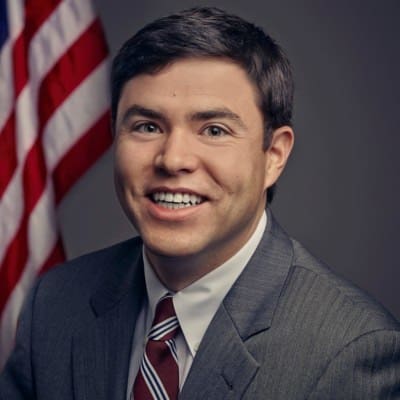
Mark Johnson, the Republican candidate for Superintendent, said in our podcast with him that by fixing problems at the Department of Public Instruction, life for teachers and students in the state can be improved.
“I really promise you I am running because there are tangible things at the Department of Public Instruction that can be fixed, that need to be fixed, that will trickle down and will help teachers in the classroom help students. Those things are supporting good local leaders so they can support their teachers. Those things are removing this burden of paperwork and overtesting. And those things are providing worthwhile personal development.”
He also said that as Superintendent, he would use the “bully pulpit” to advocate for K-12 education with the General Assembly.
“…have a conversation about what their priorities are, what my experience is from the classroom, what my experience is from managing the school district, and what we need to focus on in the budget in order to improve life for teachers, school leaders, and improve educational outcomes.”
He went on to criticize Atkinson’s current approach to working with the General Assembly.
“Right now, the current Superintendent goes over when she’s called upon by a House committee or Senate committee. I would like to take the opportunity to be in office and be there often and meet with every member of the General Assembly no matter how influential they may or may not be in the scheme of things, or whether they are Democrat or Republican.”
Read more about the candidates here.



